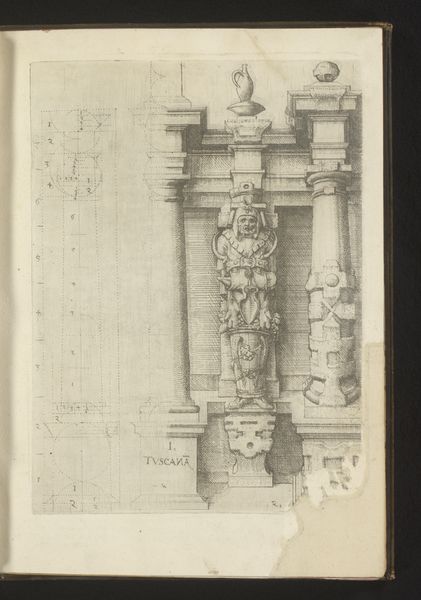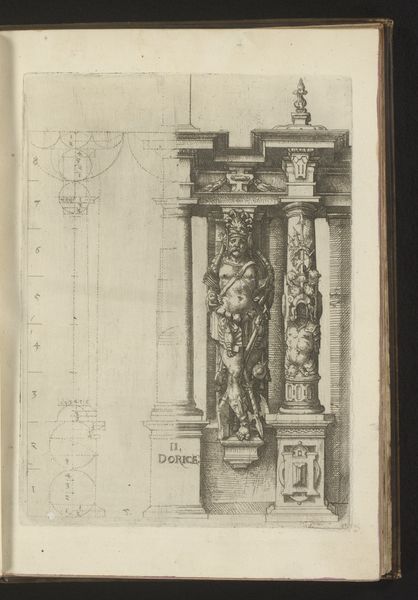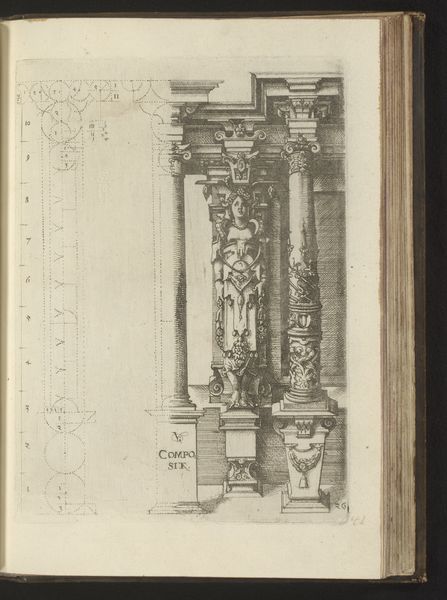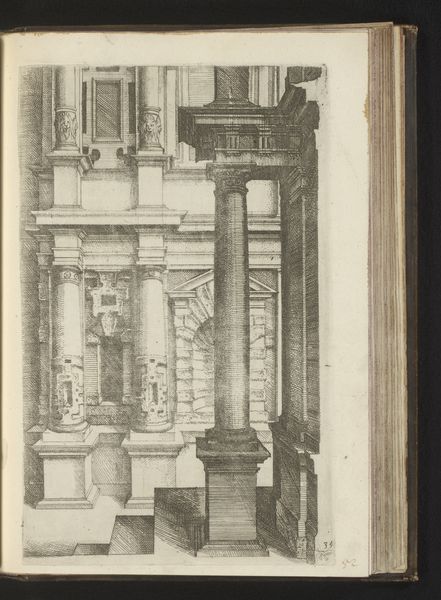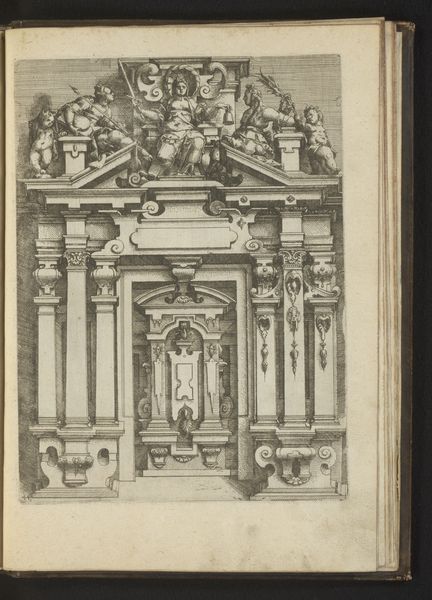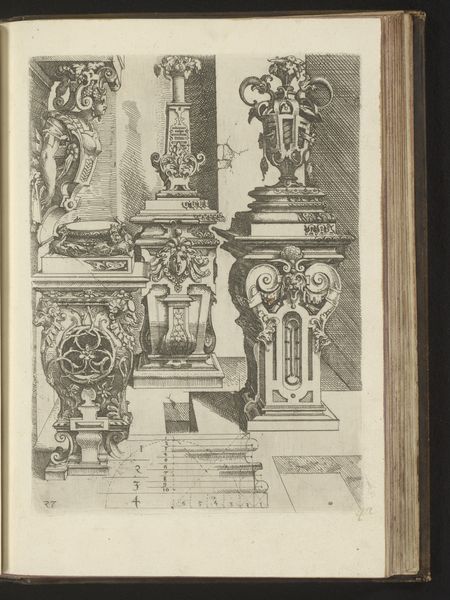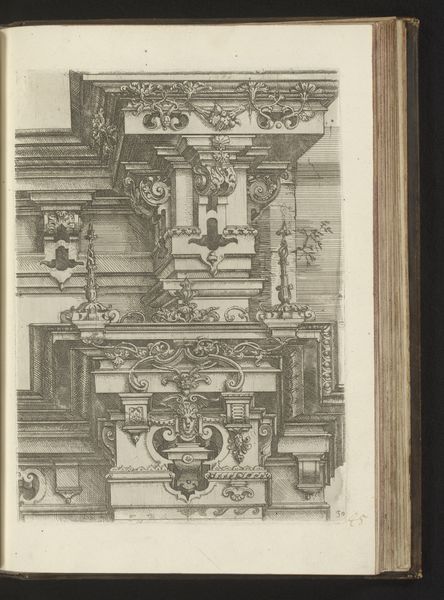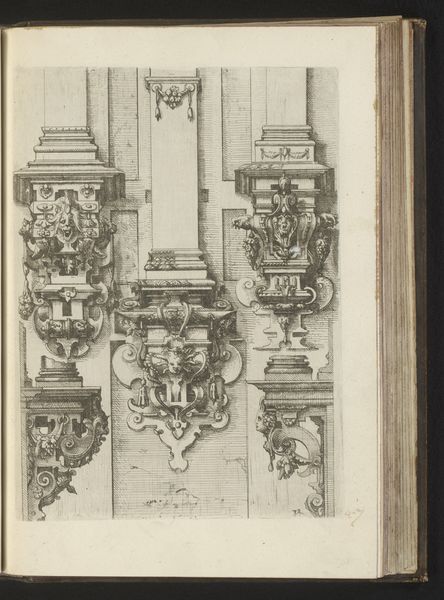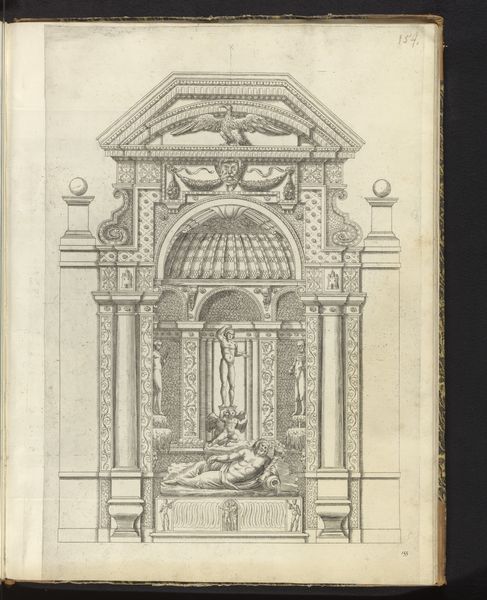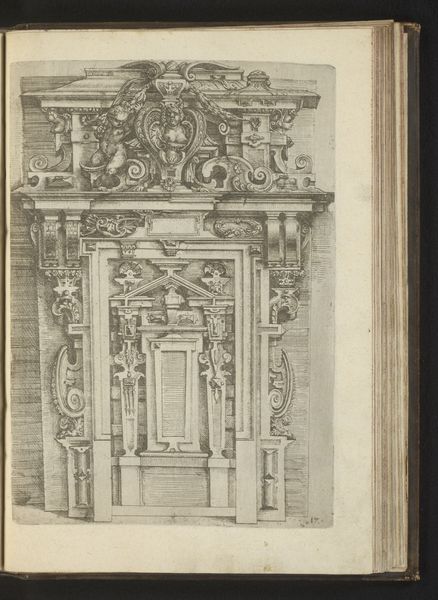
Verhoudingen van de Ionische zuilenorde met een kariatide als pilaster tussen twee zuilen 1593 - 1595
0:00
0:00
drawing, paper, ink, engraving, architecture
#
drawing
#
aged paper
#
toned paper
#
sketch book
#
classical-realism
#
mannerism
#
paper
#
form
#
11_renaissance
#
personal sketchbook
#
ink
#
geometric
#
column
#
line
#
pen work
#
sketchbook drawing
#
engraving
#
architecture
Dimensions: height 252 mm, width 183 mm
Copyright: Rijks Museum: Open Domain
Curator: I find this page from Wendel Dietterlin's sketchbook, created sometime between 1593 and 1595, quite striking. It's a detailed study focusing on the Ionic order of columns, even including a caryatid, rendered in ink on toned paper. Editor: It makes me think of secret societies and ancient mathematical principles. The aged paper really sells that feeling too. I wonder if that grid system holds some symbolic code that Dietterlin was into...like, Fibonacci but for fancy buildings? Curator: In a way, yes. The geometrical layout is the foundation of classical architecture and links directly back to earlier philosophical structures related to understanding the universe. Consider how this relates to, for example, the societal function of architecture to create a hierarchy. Who decides these proportions, and what power do those choices hold? Editor: See, now I’m imagining powerful sorcerers drawing these sketches by candlelight. Okay, maybe a touch dramatic, but it's there in the texture of the ink. It feels alchemic. Curator: Perhaps that's not so far off, Dietterlin’s vision of the Ionic column and the caryatid is not only functional. It shows architectural elements imbued with personality. He takes the foundations and then applies a flourish of Mannerist invention, disrupting any strict definition of classical. The figures carved on the caryatid also hint towards this kind of complex character. Editor: Yes! They give it life! A weird, statuesque, life-among-stones life, but still, the fact it isn't *just* another building plan does so much for the vibe of the image. Does it inspire anyone to question what can be expressed or not, inside what a thing's "meant" for...I get chills looking at these columns! Curator: Absolutely. He prompts the viewer to consider these elements outside a purely practical application, and think about their artistic expression. We can understand from that alone why this collection is invaluable for seeing into how Dietterlin thought architecture could both follow a standard while being completely reinvented. Editor: What a journey! I went in seeing an antique, almost esoteric page, but I now realize it is actually something deeper— a snapshot into the past.
Comments
No comments
Be the first to comment and join the conversation on the ultimate creative platform.
